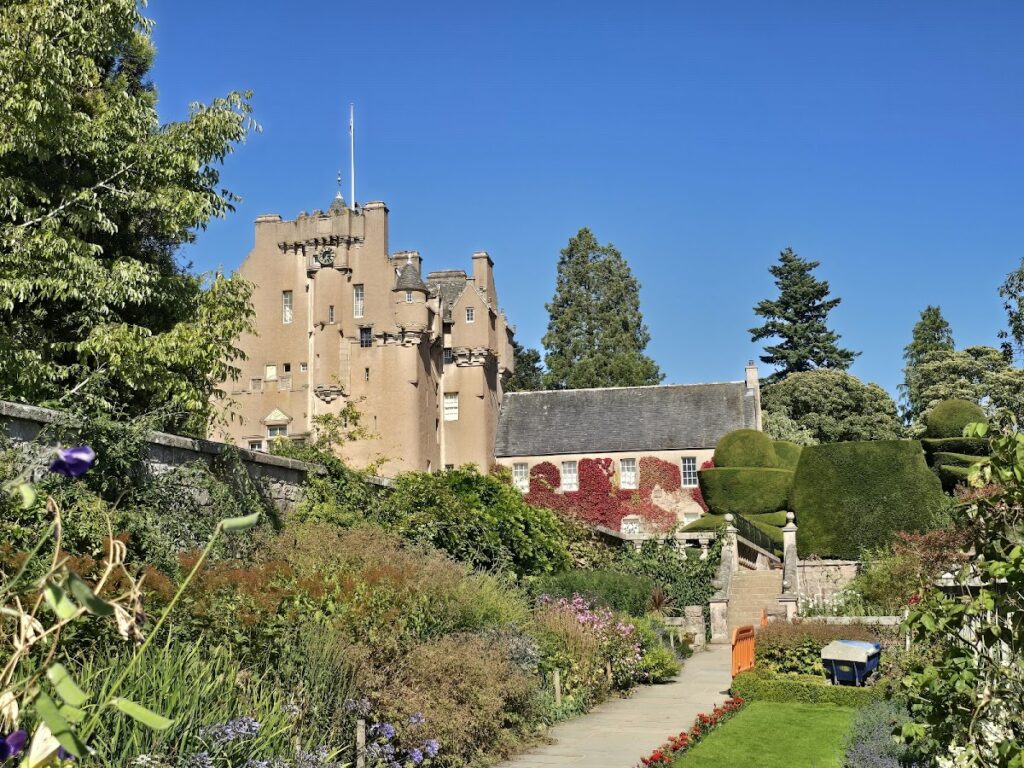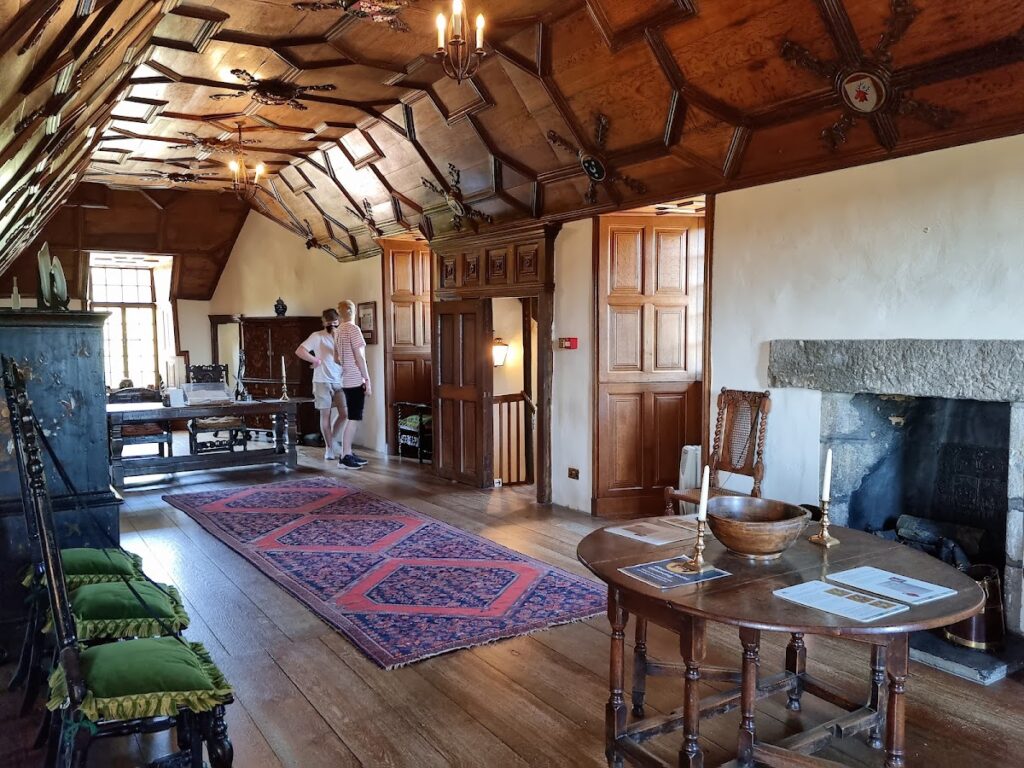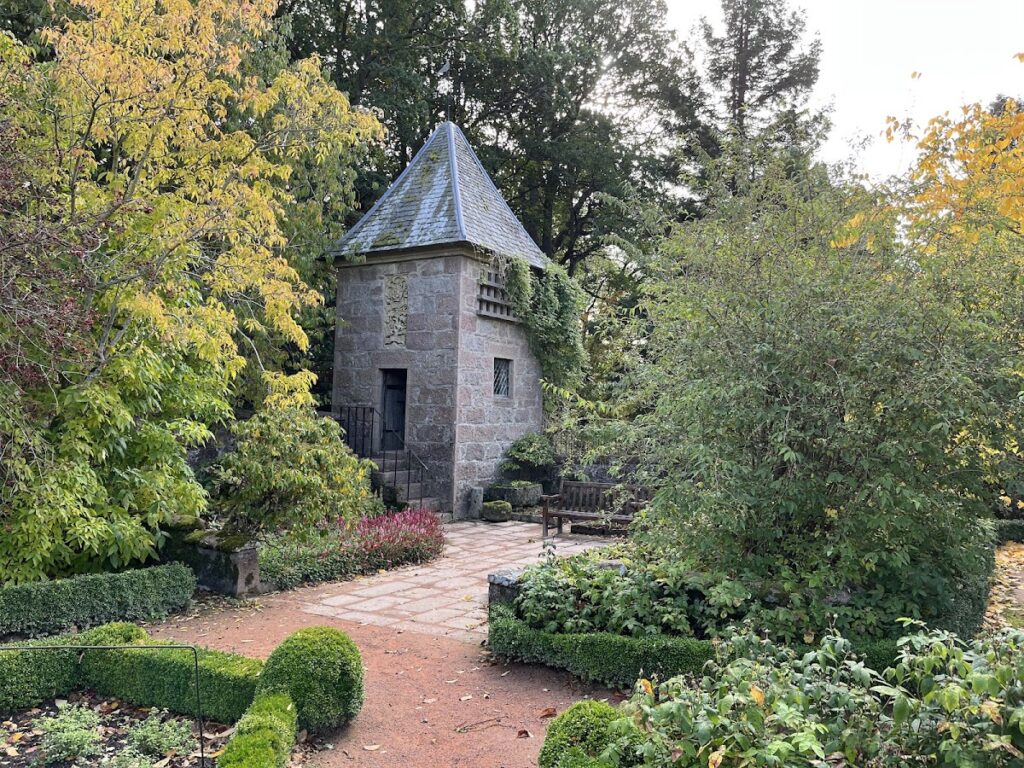Crathes Castle: A Historic Scottish Tower House and Estate
Visitor Information
Google Rating: 4.6
Popularity: Medium
Google Maps: View on Google Maps
Official Website: www.nts.org.uk
Country: United Kingdom
Civilization: Unclassified
Remains: Military
History
Crathes Castle is located near Banchory in Scotland and was constructed by the Burnett of Leys family, a lineage that shaped its history for almost four centuries. The Burnetts first received the land in 1323 by grant from King Robert the Bruce, establishing their long-standing connection to this part of Aberdeenshire.
Before the tower house seen today, the Burnetts built a wooden fortress in the form of a timber stronghold placed upon an artificial island, known as a crannog, in a nearby bog. This earlier fortification dates back to the 14th and 15th centuries and served as a residence and defensive site. Construction of the current stone castle, designed with an L-shaped plan, began in 1553 under the direction of the Burnetts. Political unrest during the reign of Mary, Queen of Scots, delayed its completion until 1596, when Alexander Burnett of Leys brought the work to finish.
During the early 17th century, Alexander Burnett extended his architectural influence by starting the rebuilding of Muchalls Castle nearby, a project finalized by his son, Sir Thomas Burnett. In the 18th century, Crathes Castle itself saw the addition of a new wing, reflecting the evolving needs and tastes of the family across generations.
In 1877, Sir Robert Burnett undertook a significant renovation of the castle’s Great Hall, adding oak paneling and gilded leather finishes in a style evocative of the medieval period. This refurbishment included the placement of both antique and reproduction furnishings designed to complement the historical atmosphere. Important painted Jacobean ceilings, which had been concealed under Georgian plaster, were rediscovered in 1913 and restored, revealing rich interior decoration dating back to the Scottish Renaissance.
Crathes Castle remained the main residence of the Burnett family until the mid-20th century. In 1951, Sir James Burnett, 13th Baronet, entrusted the property to the National Trust for Scotland, although the family continued to live there. A fire in January 1966 caused serious damage to the Queen Anne wing and parts of the service wing. Restoration efforts led by National Trust architect Schomberg Scott rebuilt the Queen Anne wing to its original two-storey form and removed later Victorian additions, aligning the castle’s appearance more closely with its historical character.
Archaeological excavations undertaken in 2004 uncovered Mesolithic pits on the estate, which were later dated to approximately 8000 to 4000 BCE. These pits have been identified as the world’s oldest known lunar calendar, predating related Mesopotamian monuments by thousands of years and providing extraordinary insight into ancient timekeeping practices in the region. The estate also includes Monboddo House, another property linked to the Burnett family’s heritage.
Remains
Crathes Castle is a stone-built, harled (rendered) tower house arranged in an L-shaped layout, with an additional wing added in the 18th century. It stands within a 240-hectare estate featuring woodlands, fields, and an intricately designed walled garden. The castle’s architecture is notable for its influences from French châteaux, seen especially in its decorative turrets and gargoyles.
Inside the castle, several rooms retain their original decorated ceilings from the Scottish Renaissance period, painted in the Jacobean style. These ceilings appear in spaces such as the Chamber of the Muses and the Chamber of Nine Worthies. The Green Lady’s Room holds particular interest due to its association with local ghost stories. The Great Hall contains family portraits and prominently displays the Horn of Leys, an ivory and jewel-inlaid horn presented by King Robert the Bruce in 1323. This horn became a symbol of the Burnett family and is represented throughout the castle in various carvings and painted designs, serving as a recurring emblem.
Some original furniture from the 16th century remains in place, including a carved bed and two caquetoire chairs—an ornate style of chair popular in the period—dated 1597 and marked with the Burnett family’s initials and heraldic symbols. These pieces contribute to the authenticity and historical resonance of the interior.
The 18th-century walled garden is organized with gravel paths that border specimen plants, many with taxonomic labels to identify them. A grass croquet court occupies a raised terrace within the garden, and striking Irish yew hedges shaped into topiary date back to 1702. These yews divide the garden into eight distinct areas, each with its own thematic planting and arrangement.
Following the devastating fire in 1966 that damaged the Queen Anne wing and parts of the service wing, careful restoration recreated the Queen Anne section according to its original two-storey design. The Victorian wing, a later addition, was removed during this process. Funds from insurance helped finance the construction of a new detached house for the Burnett family to live in. Today, Crathes Castle stands well preserved, showcasing various periods of its history both through its architecture and interior decoration.










